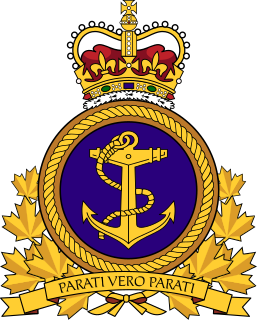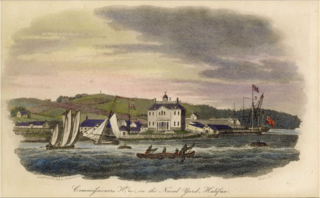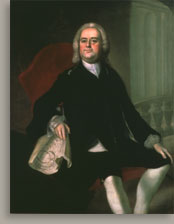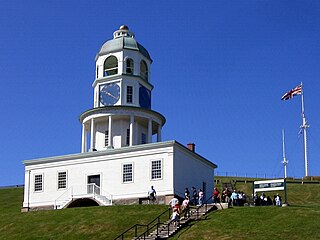
The Royal Canadian Navy is the naval force of Canada. The RCN is one of three environmental commands within the unified Canadian Armed Forces. As of 2017, Canada's navy operates 12 frigates, 4 patrol submarines, 12 coastal defence vessels and 8 unarmed patrol/training vessels, as well as several auxiliary vessels. The Royal Canadian Navy consists of 8,500 Regular Force and 5,100 Primary Reserve sailors, supported by 5,300 civilians. Vice-Admiral Ron Lloyd is the current Commander of the Royal Canadian Navy and Chief of the Naval Staff.

The Halifax-class frigate, also referred to as the City class, is a class of multi-role patrol frigates that have served the Royal Canadian Navy since 1992. The class is the product of the Canadian Patrol Frigate Project, which dates to the mid-1970s. HMCS Halifax was the first of an eventual twelve Canadian-designed and -built vessels which combine traditional anti-submarine capabilities with systems to deal with surface and air threats as well. All ships of the class are named after a major city in each province plus the cities of Ottawa and Montreal.

The North America and West Indies Station was a formation or command of the United Kingdom's Royal Navy stationed in North American waters from 1745 to 1956. The North American Station was separate from the Jamaica Station until 1830 when the two combined to form the North America and West Indies Station. It was briefly abolished in 1907 before being restored in 1915. It was renamed the America and West Indies Station in 1926. It was commanded by the Commander-in-Chief, North America and West Indies Station and subsequently by the Commander-in-Chief, America and West Indies Station.

USS Williams (DD-108) was a Wickes-class destroyer in the United States Navy entering service in 1919, and was the second ship to bear the name. Following a brief stint in active service, the ship was laid up for 17 years before being reactivated during World War II. Williams transferred to the Royal Canadian Navy during World War II and was renamed HMCS St. Clair (I65), surviving the war and being scrapped in 1946.

HMCS Halifax is a Halifax-class frigate that has served in the Royal Canadian Navy and Canadian Forces since 1992. Halifax is the lead ship in her class which is the name for the Canadian Patrol Frigate Project. She is the second vessel to carry the designation HMCS Halifax. She carries the hull classification symbol FFH 330.

The second USS Bancroft (DD-256) was a Clemson-class destroyer in the United States Navy, which briefly served in 1919. Placed in reserve, the ship lay idle before being reactivated for World War II. She was transferred to the Royal Canadian Navy in 1940, where she served as HMCS St. Francis (I93) in the Battle of the Atlantic escorting convoys. The ship was declared surplus in April 1945, sold for scrap and sank on the way to the breakers after a collision in July.

The first USS McLanahan (DD-264) was a Clemson-class destroyer in the United States Navy and transferred to the Royal Navy where she served as HMS Bradford (H72) during World War II.

USS Edwards (DD-265) was a Clemson-class destroyer in the United States Navy and transferred to the Royal Navy where she served as HMS Buxton (H96) and later in the Royal Canadian Navy during World War II.

The third USS Shubrick (DD-268) was a Clemson-class destroyer in the United States Navy. The destroyer was later transferred to the Royal Navy, where she served as HMS Ripley (G79) during World War II.

HMCS Ville de Québec is a Halifax-class frigate that has served in the Canadian Forces and Royal Canadian Navy since 1993. Ville de Québec is the third vessel in her class which is the name for the Canadian Patrol Frigate Project. The frigate is the second Royal Canadian Navy ship to be named Ville de Québec and is Canada's only fully bilingual warship. She is assigned to Maritime Forces Atlantic (MARLANT) and is homeported at CFB Halifax. The vessel serves on MARLANT missions protecting Canada's sovereignty in the Atlantic Ocean and enforcing Canadian laws in its territorial sea and Exclusive Economic Zone. Her commanding officer is Commander P. Robinson.

Royal Naval Dockyard, Halifax was a Royal Navy base in Halifax, Nova Scotia. Established in 1759, the Halifax Yard served as the headquarters for the Royal Navy's North American Station for sixty years, starting with the Seven Years' War. The Royal Navy continued to operate the station until it was closed in 1905. The station was sold to Canada in 1907 becoming Her Majesty's Canadian Dockyard, a function it still serves today as part of CFB Halifax.
USS Albatross (AMS-1/YMS-80) was an YMS-1-class auxiliary motor minesweeper acquired by the U.S. Navy during World War II for clearing coastal minefields.

Benjamin Green was a merchant, judge and political figure in Nova Scotia. He served as administrator for Nova Scotia in 1766 and from 1771 to 1772. He was born in Salem Village, the son of the Reverend Joseph Green and Elizabeth Gerrish, and entered business with his brothers in Boston. In 1737, he married Margaret Pierce. He was secretary to William Pepperrell, who led the attack against Louisbourg in 1745, and served as treasurer for the forces from New England and secretary for the council that administered Louisbourg after its capture. In 1749, he went to Halifax, where he was named to Edward Cornwallis's Nova Scotia Council and also served as naval officer. Green was also judge in the vice admiralty court; he resigned in 1753. In 1750, he became secretary to the Council and provincial treasurer. Green was named a justice of the peace in 1760. While in England to assist in auditing the accounts of Peregrine Thomas Hopson, he had to defend himself against charges of assigning contracts to Malachy Salter in exchange for a share in the profits. He was reprimanded but allowed to retain his posts. During his term as administrator in 1766, he was criticized by the provincial assembly for not following the correct procedures for dealing with the provincial finances. Green resigned his post as provincial treasurer in 1768, citing poor health.

Western Local Escort Force (WLEF) referred to the organization of anti-submarine escorts for World War II trade convoys from North American port cities to the Western Ocean Meeting Point near Newfoundland where ships of the Mid-Ocean Escort Force (MOEF) assumed responsibility for safely delivering the convoys to the British Isles.

This timeline of the History of the Halifax Regional Municipality documents all events that had happened in Halifax, Nova Scotia, Canada, including historical events in the former city of Dartmouth, the Town of Bedford and Halifax County. Events date back to the early-18th century and continue until the present in chronological order.

The Naval Museum of Halifax is a Canadian Forces museum located at CFB Halifax in the former official residence of the Commander-in-Chief of the North America Station (1819–1905). Also known as the "Admiralty House", the residence is a National Historic Site of Canada located in Halifax, Nova Scotia, Canada. The museum collects, preserves and displays the artifacts and history of the Royal Canadian Navy.

The Battle off Halifax took place on 28 May 1782 during the American Revolutionary War. It involved the American privateer Jack and the 14-gun Royal Naval brig HMS Observer off Halifax, Nova Scotia. Captain David Ropes commanded Jack, and Lieutenant John Crymes commanded Observer. The battle was "a long and severe engagement."
Martha's Vineyard Naval Auxiliary Air Station was a United States Navy facility located in Edgartown and West Tisbury, Massachusetts operational from 1943 to 1946. It existed as an auxiliary air facility of Naval Air Station Quonset Point.
The Raid on Annapolis Royal took place on 29 August 1781 during the American Revolutionary War. The raid involved two American privateers attacking and pillaging Annapolis Royal, Nova Scotia to revenge the British destruction of the Penobscot Expedition. One historian described it as "one of the most daring and dramatic raids upon Nova Scotia."


















